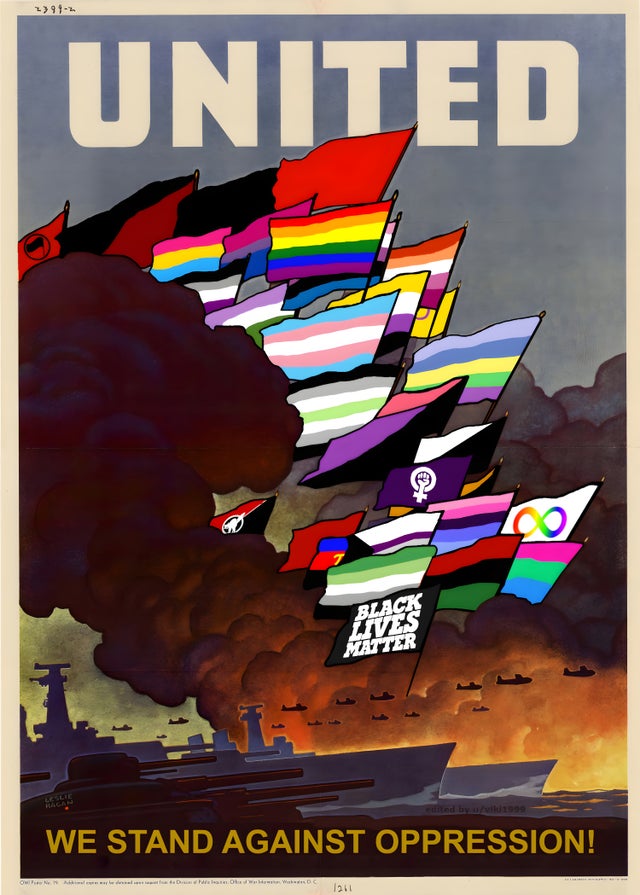I'll take sanctions over a draft
GlugGlugYummyWater [none/use name]
- 2 Posts
- 23 Comments
Old songs now represent 70 percent of the U.S. music market, according to the latest numbers from MRC Data, a music-analytics firm. Those who make a living from new music—especially that endangered species known as the working musician—should look at these figures with fear and trembling. But the news gets worse: The new-music market is actually shrinking. All the growth in the market is coming from old songs.
U.S Catalog vs. Current Consumption Source: MRC Data The 200 most popular new tracks now regularly account for less than 5 percent of total streams. That rate was twice as high just three years ago. The mix of songs actually purchased by consumers is even more tilted toward older music. The current list of most-downloaded tracks on iTunes is filled with the names of bands from the previous century, such as Creedence Clearwater Revival and The Police.
I encountered this phenomenon myself recently at a retail store, where the youngster at the cash register was singing along with Sting on “Message in a Bottle” (a hit from 1979) as it blasted on the radio. A few days earlier, I had a similar experience at a local diner, where the entire staff was under 30 but every song was more than 40 years old. I asked my server: “Why are you playing this old music?” She looked at me in surprise before answering: “Oh, I like these songs.”
Never before in history have new tracks attained hit status while generating so little cultural impact. In fact, the audience seems to be embracing the hits of decades past instead. Success was always short-lived in the music business, but now even new songs that become bona fide hits can pass unnoticed by much of the population.
Only songs released in the past 18 months get classified as “new” in the MRC database, so people could conceivably be listening to a lot of two-year-old songs, rather than 60-year-old ones. But I doubt these old playlists consist of songs from the year before last. Even if they did, that fact would still represent a repudiation of the pop-culture industry, which is almost entirely focused on what’s happening right now.
Every week I hear from hundreds of publicists, record labels, band managers, and other professionals who want to hype the newest new thing. Their livelihoods depend on it. The entire business model of the music industry is built on promoting new songs. As a music writer, I’m expected to do the same, as are radio stations, retailers, DJs, nightclub owners, editors, playlist curators, and everyone else with skin in the game. Yet all the evidence indicates that few listeners are paying attention.
RECOMMENDED READING Taylor Swift adjusts her headphones in an Apple Music ad How Significant Is the Music Industry's Rebound? SPENCER KORNHABER How the Music Industry Explains Inequality, Globalization, Middle-Class Decline ... Basically Everything DEREK THOMPSON
The Shazam Effect DEREK THOMPSON Consider the recent reaction when the Grammy Awards were postponed. Perhaps I should say the lack of reaction, because the cultural response was little more than a yawn. I follow thousands of music professionals on social media, and I didn’t encounter a single expression of annoyance or regret that the biggest annual event in new music had been put on hold. That’s ominous.
Can you imagine how angry fans would be if the Super Bowl or NBA Finals were delayed? People would riot in the streets. But the Grammy Awards go missing in action, and hardly anyone notices.
The declining TV audience for the Grammy show underscores this shift. In 2021, viewership for the ceremony collapsed 53 percent from the previous year—from 18.7 million to 8.8 million. It was the least-watched Grammy broadcast of all time. Even the core audience for new music couldn’t be bothered—about 98 percent of people ages 18 to 49 had something better to do than watch the biggest music celebration of the year.
A decade ago, 40 million people watched the Grammy Awards. That’s a meaningful audience, but now the devoted fans of this event are starting to resemble a tiny subculture. More people pay attention to streams of video games on Twitch (which now gets 30 million daily visitors) or the latest reality-TV show. In fact, musicians would probably do better getting placement in Fortnite than signing a record deal in 2022. At least they would have access to a growing demographic.
More people watch the Great British Bake Off than the Grammy Awards Source: Nielsen/Media Reports Some would like to believe that this trend is just a short-term blip, perhaps caused by the pandemic. When clubs open up again, and DJs start spinning new records at parties, the world will return to normal, or so we’re told. The hottest songs will again be the newest songs. I’m not so optimistic.
Read: Why aren’t there more women working in audio?
A series of unfortunate events are conspiring to marginalize new music. The pandemic is one of these ugly facts, but hardly the only contributor to the growing crisis.
Consider these other trends:
The leading area of investment in the music business is old songs. Investment firms are getting into bidding wars to buy publishing catalogs from aging rock and pop stars. The song catalogs in most demand are by musicians who are in their 70s or 80s (Bob Dylan, Paul Simon, Bruce Springsteen) or already dead (David Bowie, James Brown).
Even major record labels are participating in the rush to old music: Universal Music, Sony Music, Warner Music, and others are buying up publishing catalogs and investing huge sums in old tunes. In a previous time, that money would have been used to launch new artists. The best-selling physical format in music is the vinyl LP, which is more than 70 years old. I’ve seen no signs that the record labels are investing in a newer, better alternative—because, here too, old is viewed as superior to new. In fact, record labels—once a source of innovation in consumer products—don’t spend any money on research and development to revitalize their business, although every other industry looks to innovation for growth and consumer excitement. Record stores are caught up in the same time warp. In an earlier era, they aggressively marketed new music, but now they make more money from vinyl reissues and used LPs. Radio stations are contributing to the stagnation, putting fewer new songs into their rotation, or—judging by the offerings on my satellite-radio lineup—completely ignoring new music in favor of old hits. When a new song overcomes these obstacles and actually becomes a hit, the risk of copyright lawsuits is greater than ever before. The risks have increased enormously since the “Blurred Lines” jury decision of 2015, and the result is that additional cash gets transferred from today’s musicians to old (or deceased) artists. Adding to the nightmare, dead musicians are now coming back to life in virtual form—via holograms and “deepfake” music—making it all the harder for young, living artists to compete in the marketplace. As record labels lose interest in new music, emerging performers desperately search for other ways to get exposure. They hope to place their self-produced tracks on a curated streaming playlist, or license their songs for use in advertising or the closing credits of a TV show. Those options might generate some royalty income, but they do little to build name recognition. You might hear a cool song on a TV commercial, but do you even know the name of the artist? You love your workout playlist at the health club, but how many song titles and band names do you remember? You stream a Spotify new-music playlist in the background while you work, but did you bother to learn who’s singing the songs?Decades ago, the composer Erik Satie warned of the arrival of “furniture music,” a kind of song that would blend seamlessly into the background of our lives. His vision seems closer to reality than ever.
Some people—especially Baby Boomers—tell me that this decline in the popularity of new music is simply the result of lousy new songs. Music used to be better, or so they say. The old songs had better melodies, more interesting harmonies, and demonstrated genuine musicianship, not just software loops, Auto-Tuned vocals, and regurgitated samples.
There will never be another Sondheim, they tell me. Or Joni Mitchell. Or Bob Dylan. Or Cole Porter. Or Brian Wilson. I almost expect these doomsayers to break out in a stirring rendition of “Old Time Rock and Roll,” much like Tom Cruise in his underpants.
Just take those old records off the shelf
I’ll sit and listen to ’em by myself …
I can understand the frustrations of music lovers who get no satisfaction from current mainstream songs, though they try and they try. I also lament the lack of imagination on many modern hits. But I disagree with my Boomer friends’ larger verdict. I listen to two to three hours of new music every day, and I know that plenty of exceptional young musicians are out there trying to make it. They exist. But the music industry has lost its ability to discover and nurture their talents.
List of Song or Recording Rights Sold Since 2019 Music-industry bigwigs have plenty of excuses for their inability to discover and adequately promote great new artists. The fear of copyright lawsuits has made many in the industry deathly afraid of listening to unsolicited demo recordings. If you hear a demo today, you might get sued for stealing its melody—or maybe just its rhythmic groove—five years from now. Tr
Copy/paste quotes from Mao's Little Red Book.
Or from communist literature in general. I literally have a bookmark for Michael Parenti quotes ready for any reactionary bullshit I see.
- GlugGlugYummyWater [none/use name]tomenby•Guys Are Paying $10,000 to Become Real Men at Warrior Camps·3 years ago
Load of shit
My instructor passed me after running 2 stop sings and driving into oncoming traffic
- GlugGlugYummyWater [none/use name]to
 ·3 years ago
·3 years agodeleted by creator
- GlugGlugYummyWater [none/use name]to
 ·3 years ago
·3 years agoThey want to take advantage of kids easier
- GlugGlugYummyWater [none/use name]to
 ·3 years ago
·3 years agoGood. Fuck school
- GlugGlugYummyWater [none/use name]to
 ·3 years ago
·3 years agoDiabetes with a side of whatever you can fish out of the trash can
a big ass weed plant
2029, just before World War 5
- GlugGlugYummyWater [none/use name]to
 ·3 years ago
·3 years agodeleted by creator




"Russian imperialism"?